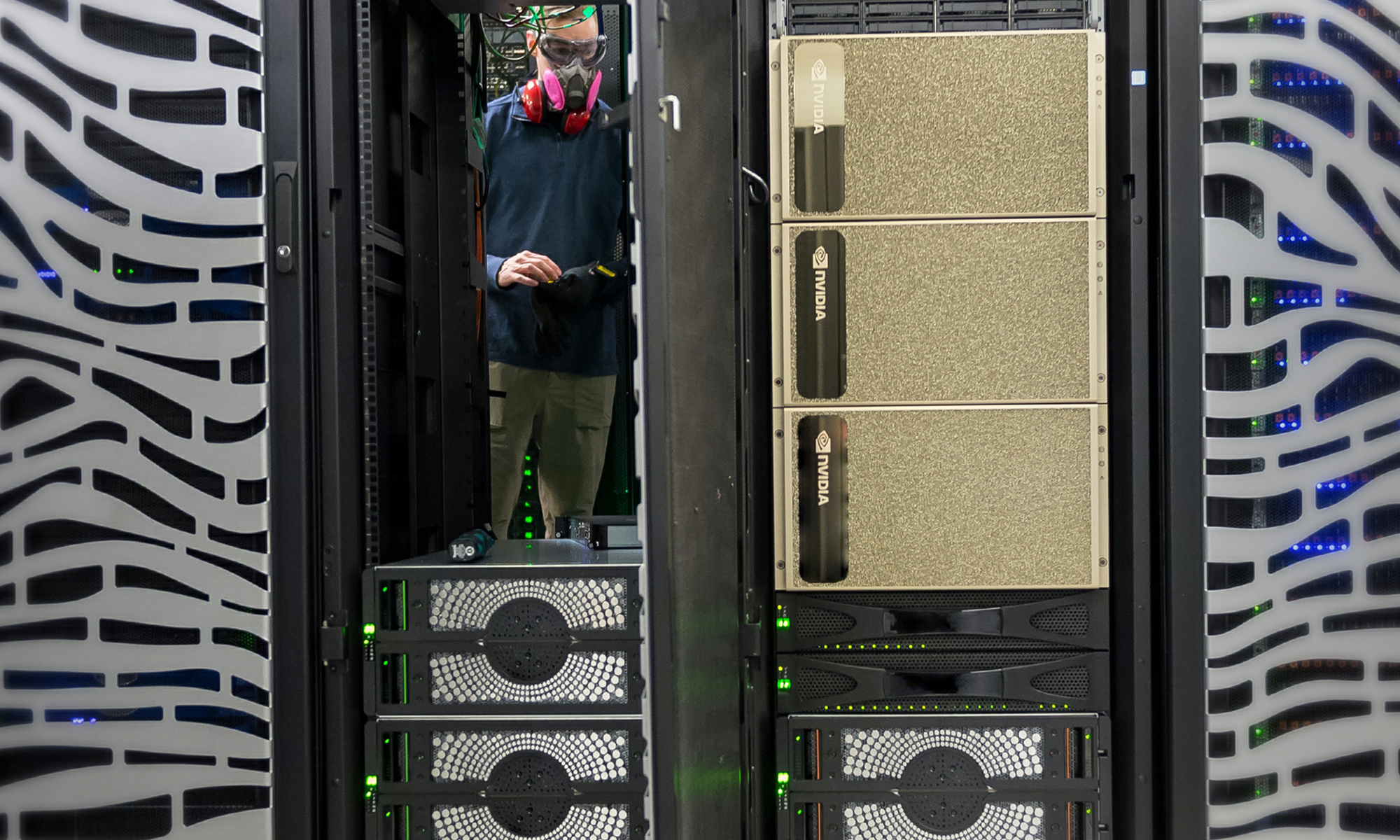Nvidia (NVDA +2.92%) has accomplished a lot in recent years and made plenty of big moves -- from developing the world's highest-performance artificial intelligence (AI) chips to making itself a general AI leader across industries from healthcare to automotive. The Dow Jones Industrial Average even invited Nvidia to join last year, and the company went on to post the best performance in the index.
Last year, Nvidia's biggest moves might be considered the company's stock split and the launch of the new Blackwell architecture and chip. By lowering the price of each individual share, the stock split made it easier for a broader range of investors to buy the stock. And the Blackwell launch, which delivered $11 billion in revenue almost right out of the gate, showed that Nvidia could successfully carry out its innovation promises.
All of this is fantastic, but what happened in the first half of this year might have been Nvidia's biggest move yet. Here's a closer look.

Image source: Getty Images.
Nvidia's 30-year history
Before fully exploring Nvidia's latest victory, it's important to understand all that's unfolded so far. This company's history spans more than 30 years and has gone from leadership in the video gaming chip market to expanding the use of its chips across industries -- and making them the chip of choice for AI. These chips are called graphics processing units (GPUs) and fuel crucial AI tasks, including the training and inferencing of large language models (LLMs).
Nvidia's GPUs have exceled for a very simple reason: They're the most powerful ones around. By choosing such chips, customers are able to more quickly accomplish their AI goals. Even though Nvidia chips cost more than those of its rivals, the company's CEO Jensen Huang says they're actually cheaper over the long run as the efficiency produced over time reduces the total cost of ownership.

NASDAQ: NVDA
Key Data Points
This chip dominance has helped Nvidia's earnings explode higher quarter after quarter, and the company finished the latest fiscal year with a triple-digit revenue increase to the record level of $130 billion. This AI success is reflected in the share performance, too, with Nvidia stock surging 900% over the past three years.
First-half challenges
Now I'll consider what may have been Nvidia's biggest move yet, and to do so, it's important to understand the challenges the company faced in the first half. There are three: worries about cuts in AI spending, potential import tariffs, and U.S. controls on chip exports to China.
Earlier this year, investors feared that Chinese start-up DeepSeek's inexpensive training of an LLM could prompt U.S. tech companies to go a cheaper route -- but this pressure on Nvidia's stock was short-lived, as messages from tech companies highlighted their intention to continue aggressively spending on AI.
The import-tariff situation and chip-export issues remain ongoing, however. Though President Donald Trump exempted electronics from tariffs, this exemption is temporary. In the future, Nvidia could face higher costs on its imported parts and products. Though the company has made efforts to manufacture in the U.S., it still primarily manufactures abroad.
As for China, Nvidia, as it stands, can't sell its current chips there, a market that last year represented 13% of its total sales. So far, it's not clear if the company will regain access to China.
Nvidia's biggest move
What was Nvidia's biggest move? The ability to quickly win back investor confidence, resulting in a 67% gain for the stock from its April low and a 17% increase for the first half.
Nvidia did this by communicating honestly -- even if the news wasn't particularly fantastic -- and being proactive. For example, the company said that export restrictions were destructive for U.S. tech companies and it was looking for solutions. In the meantime, however, it would exclude China from its earnings guidance. As for the tariff headwind, Nvidia quickly took action, announcing its investment in two U.S. factories with the goal of building complete AI supercomputers in the U.S. for the first time ever.
This is a great sign for Nvidia investors because it shows this company has the strength to withstand headwinds -- and can galvanize investors' excitement about what the company has to offer over the long term. This turnaround already helped Nvidia reach the huge milestone of becoming the first company with a $4 trillion market value.
All of this could make investors confident that, when faced with other potential headwinds down the road, Nvidia, once again, will have what it takes to address and overcome them. That makes the stock a great one to buy and hold for the long term.





